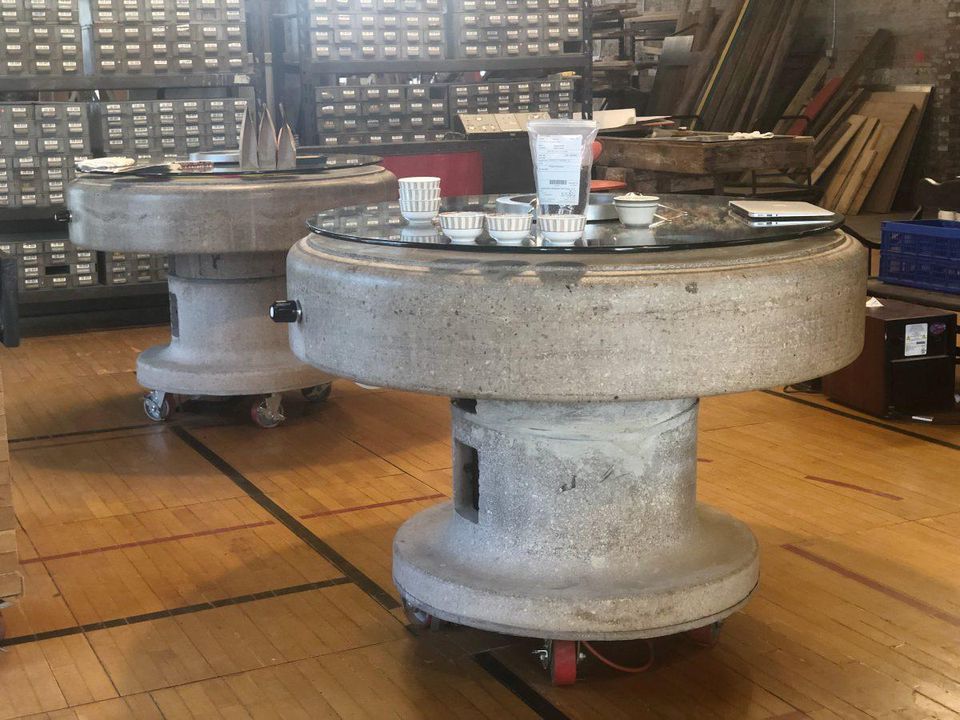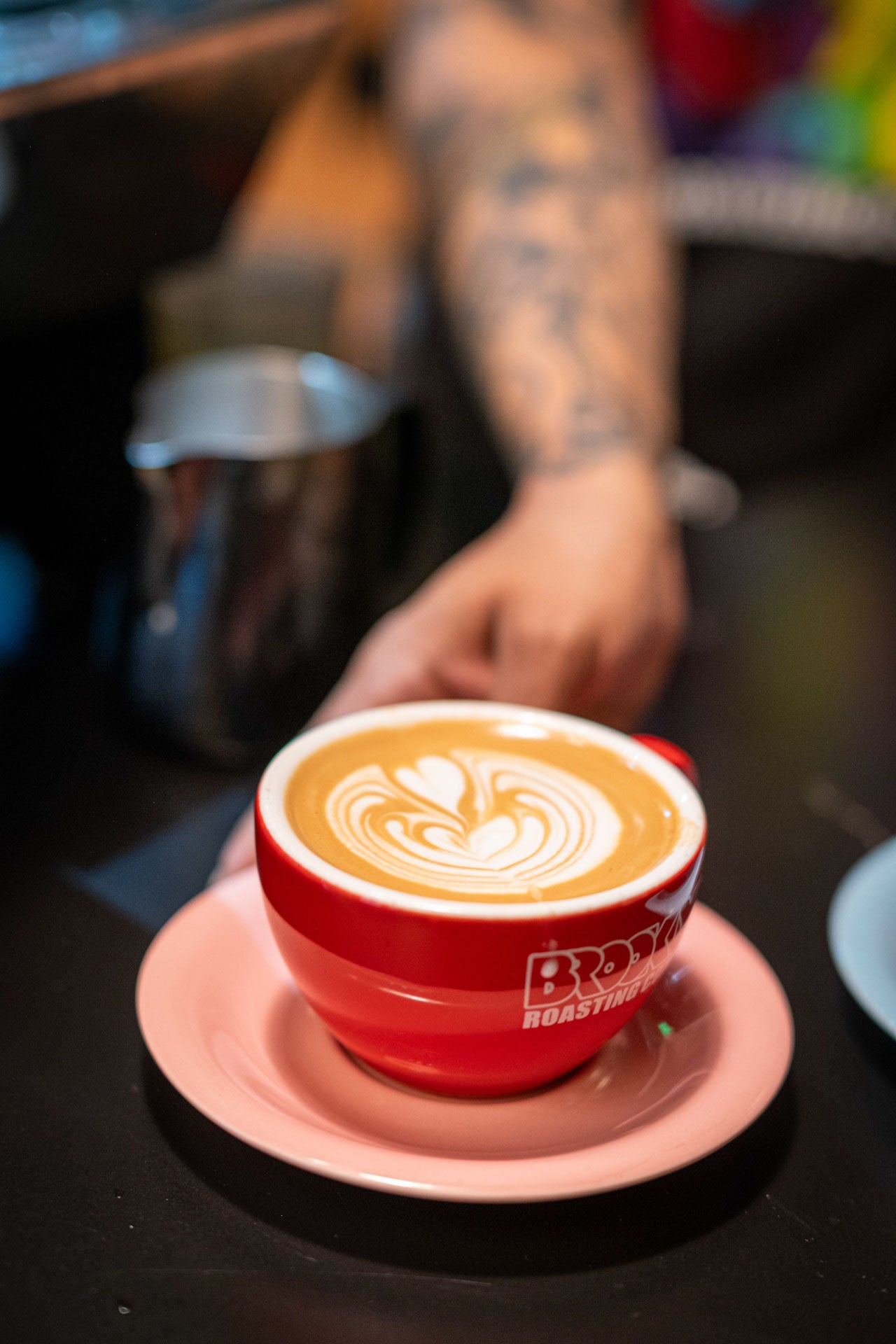
Forbes: Inside The Coffee Cupping Lab At Brooklyn Roasting Company
Forbes: Inside The Coffee Cupping Lab At Brooklyn Roasting Company

A quality control lab, on-staff Q Graders and a new curated coffee line highlight a commitment to quality CREDIT: BROOKLYN ROASTING COMPANY
A quality control lab, on-staff Q Graders and a new curated coffee line highlight a commitment to qualityCREDIT: BROOKLYN ROASTING COMPANY
In the former power plant of the Brooklyn Navy Yard sits the headquarters of Brooklyn Roasting Company, which supplies a different (and for many of us, essential) kind of fuel.
I’m sitting down with Jim Munson, co-founder and CEO of Brooklyn Roasting Company, in his office, drinking (what else) coffee out of a thick-walled mug with the company’s logo in black letters as Munson sips his out of a new mug with the same logo but the letters are filled with a rainbow of colors.
“Part of our mission statement is that the outline of our logo –– like the outline of Brooklyn –– never changes, but what’s inside –– the character of our coffees and the character of the people that work here –– always changes,” said Munson. “As a borough and as a business we’re always changing. We understand that part of our DNA is to have to if not reinvent ourselves at least reimagine parts of our business all the time.”

A barista pulls a shot of espresso CREDIT: BROOKLYN ROASTING COMPANY
Munson noted that Brooklyn Roasting Company is in the process of redefining its level of quality control, which was prompted in part by their move into this historic space. After the roasters, offices and warehouse were built out, the quality control lab was added as a finishing touch.
Inside the lab are old-school roasters which utilize the heat of a flame to roast small sample batches to help hone in on each coffee’s roast profile and determine optimal roasting time and temperature. The cupping tables are former handwashing sinks as old as the building that have been turned over and repurposed. There’s a washbasin in the center of each cupping table to clean off spoons during each cupping session, and colorful balls kept in place with hula hoops allow the tables to spin so that tasters can try multiple cups of coffee without having to walk around the table.
As part of this revamped commitment to quality, Munson selected four employees to prepare and take the rigorous tests to become certified Q Graders (the sommeliers of the coffee world) and incredibly all four passed on their first attempt –– a feat considering there are only a couple hundred Q Graders in the United States and about 4,000 worldwide

Inside the coffee cupping lab CREDIT: BROOKLYN ROASTING COMPAN
unson put his newly minted Q Graders to the task of curating a lineup of connoisseur level coffees which would become known as Q-rated. The Q-Graders spent weeks cupping more than 130 coffees from the main coffee-growing regions (East Africa, Indonesia, Central America and South America) before landing on a hand-picked lineup of six different coffees launching in early February.
“We carefully chose these coffees to be very distinct from one another so each of them has a unique set of characteristics in the aroma, acidity and flavor,” said Lukas Holst, one of Brooklyn Roasting Company’s Q graders. “They’re a good representation of specialty coffee worldwide.”
In the cupping lab, Holst and Raquel Lohmann (another Q-grader on staff) walked me through a cupping session of the Q-rated line. Lohmann showed me the Specialty Coffee Association of America’s coffee cupping form used to score coffees on a scale that goes up to 100, with categories including aroma, flavor and aftertaste, acidity, body and uniformity. A higher score demands a higher price for the coffee beans, and in the specialty market we’re typically dealing with those scoring 80 and up, with anything rated below considered to be commercial grade.

The setup for a cupping session CREDIT: ABIGAIL ABESAMIS
To kick off the cupping, Holst and Lohmann began filling cups of ground coffee with hot water at the same time, making their way around the table. It is here that the coffee blooms and the coffee grinds float to the top and form a crust. After precisely four minutes (which allows for proper time to extract the flavors of the beans), we made our rounds and carefully broke the crust of each cup, smelling the coffee as we went. Tasting came next, with a specific technique of aspiration “which forces the coffee in with your breath so that the aroma can get to your olfactory bulb,” explained Lohmann.
As Q-graders, Holst and Lohmann are cupping coffees every day at the lab, from production roasts (to ensure the quality of the beans going to customers) to sample roasts of new green coffee lots.

